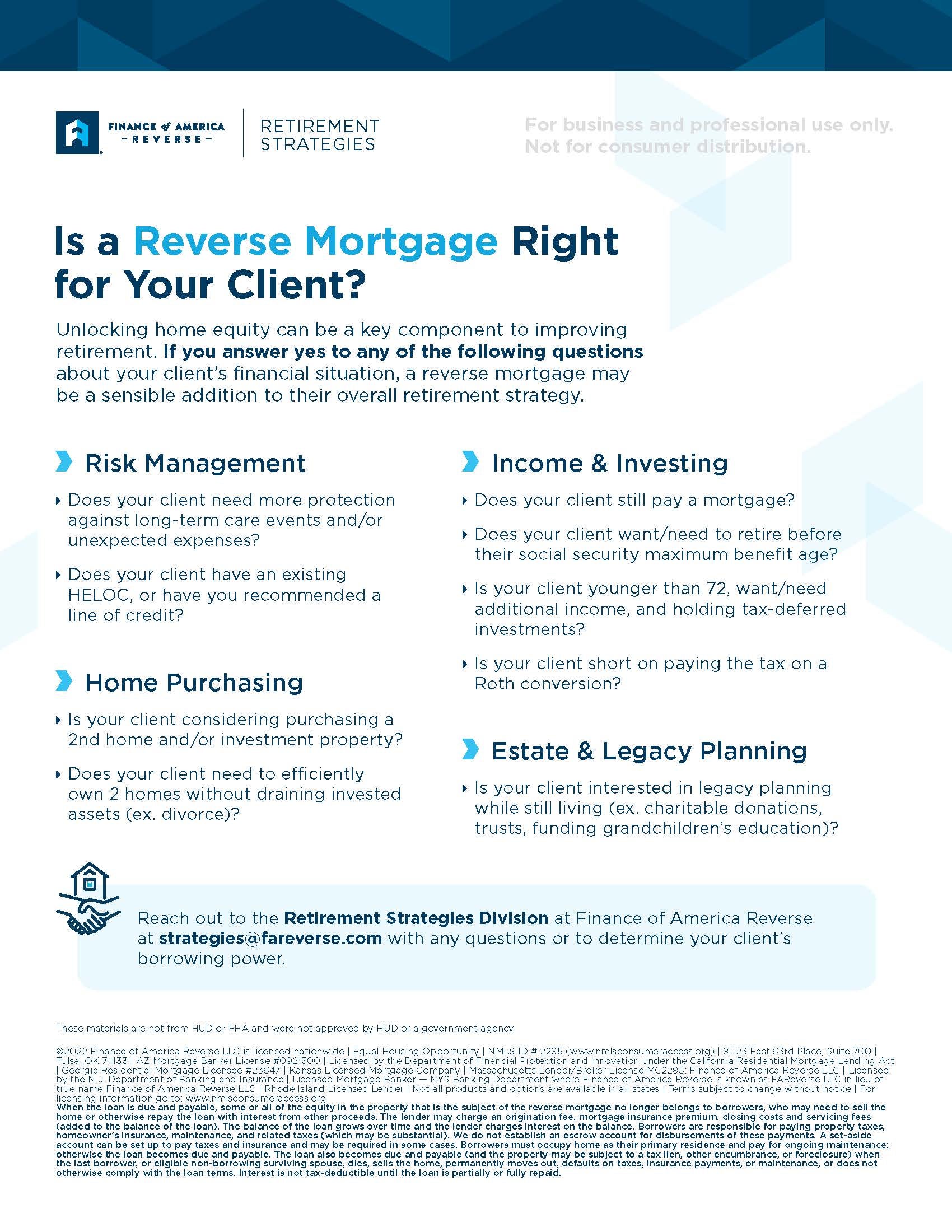Name: Charlene K.
Age: 72
Home Value: $650,000
Potential Loan Amount: $278,000
A reverse mortgage line of credit withdrawing $35,000 per year for 10 years* while retaining home equity.

Browse on-demand resources and strategies designed to help your clients improve retirement with home equity.

Nine simple questions to help you and your client evaluate if a reverse mortgage may be right for them.

May 1, 2024 | 2:00PM EST
Yes. The borrower still retains ownership of the home and may sell it at any time with no prepayment penalties. The home is simply secured with a lien similar to a traditional mortgage or home equity line of credit.
There is never a required principal or interest payment during the life of a reverse mortgage loan. Homeowners are still required to pay property-related expenses, including taxes, insurance, and HOA fees.
Generally, the loan balance is due after the last borrower permanently moves from the home or passes away.
The borrower’s heirs may sell the home and keep any remaining equity if they wish, or refinance with a traditional mortgage if they want to retain the property. In the event the loan exceeds the value of the property, the heirs can choose to walk away via foreclosure with no responsibility to the remaining balance.
Yes, reverse mortgages are non-recourse loans, which means the lender can only look to the subject property for satisfaction of the mortgage lien. The borrower and/or heirs are never personally liable for satisfaction of the reverse mortgage.
FAR’s proprietary products can offer borrowers loan amounts up to $4 million.
Yes. The home can be in a trust, revocable or irrevocable, provided the trust meets FHA trust guidelines.
This amount is generally based on the home’s value, prevailing interest rates, and the age of the youngest borrower or eligible non-borrowing spouse.
Reverse mortgages are only available on the borrower’s primary residence, which can be a single-family home or up to a four-unit dwelling.
However, there are no restrictions on the use of reverse mortgage proceeds. As long as borrowers continue to meet the occupancy requirements of the loan, they may use their proceeds as part of a secondary property purchase.
The borrower is responsible for all property-related expenses, including taxes, insurance, and HOA fees.
No. All reverse mortgage proceeds are considered loan proceeds and not subject to income tax.
Borrowers must be at least 62 for an FHA-insured reverse mortgage and 60 (where applicable by state law) for a lender-specific product, including FAR’s proprietary solutions. Younger spouses can remain on the property title but cannot be on the loan.
The terms of the loan remain the same as long as one borrower remains in the home.